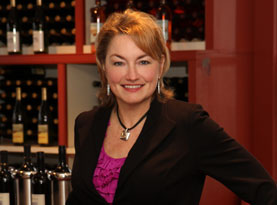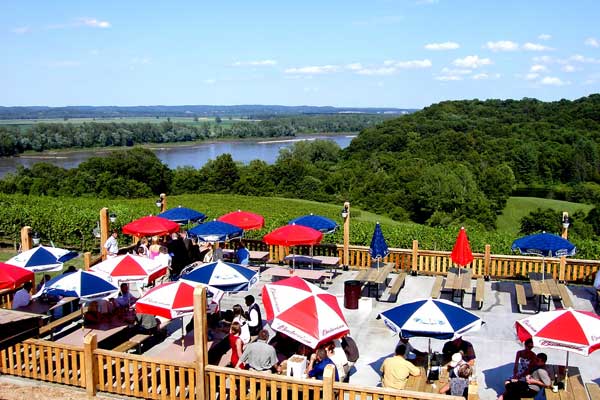Wine Industry Updates From MO, OH, IN and NE
Leaders of the Missouri, Ohio, Indiana and Nebraska provided current overviews of their state’s wine industries on Thursday, February 6th at the 2014 Midwest Grape and Wine Conference in St. Charles, Missouri. Here’s what they had to say:
Jim Anderson, Missouri Wine and Grape Board, executive director
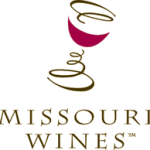 Missouri now has 121 wineries producing over 900,000 gallons of wine each year, Anderson reported. There will be a new economic impact study compiled next year, but Anderson pegs the current contribution of the wine industry to the Missouri economy at $1.6 billion per year.
Missouri now has 121 wineries producing over 900,000 gallons of wine each year, Anderson reported. There will be a new economic impact study compiled next year, but Anderson pegs the current contribution of the wine industry to the Missouri economy at $1.6 billion per year.
During January, Missouri Governor Jay Nixon announced $10 million in additional spending for Missouri tourism. Anderson hopes the state will devote more tourism dollars to promoting wine trails because of Missouri wine’s demonstrated ability to attract tourists for longer stays.
Government funding has also been released for a new Norton grape project according to Anderson. Starting this year, $59,000 will be shared by the University of Missouri and Missouri State University to do research on Missouri’s state grape.
Development work on the new teaching winery at the University of Missouri continues, Anderson told Midwest Conference attendees. $1.5 million of the $3.0 million needed to fund the 9,300 square foot production winery on the Columbia campus has already been raised from private sources.
Currently, the Wine and Grape Board is working with the Missouri legislature to secure the additional dollars needed for the teaching facility to break ground.
Also at the University of Missouri, two new, full-time wine positions are in the process of being filled. The first is a PhD level viticulture position that should be staffed by summer. The other is a new University extension grape specialist.
Missouri has formed promotional partnerships with two Missouri meat producing organizations. The Missouri Grape and Wine Board now has a national wine promotion effort working with the Missouri Pork Association and also has an ongoing campaign with the Missouri Beef Industry Council.
Donniella Winchell, Ohio Wine Producers Association, executive director
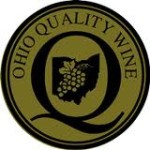 According to Winchell, there are now 197 wineries is Ohio, which is an increase of 20 wineries in the past year, according to Midwest Wine Press data.
According to Winchell, there are now 197 wineries is Ohio, which is an increase of 20 wineries in the past year, according to Midwest Wine Press data.
However, Winchell said this frigid winter has cast a pall over the Lake Erie wine producing region where Ohio’s largest concentration of vineyards resides.
Subzero weather has done substantial damage to the Lake Erie vinifera crop with reports of 90% to 100% bud damage, she said. Conversations are now underway about using seasonal vineyard workers to pull up “suckers” from vines that have frozen to the ground, Winchell told the audience. (Winchell’s comment suggests winter injury has killed the upper portions of many vines and grape growers will be faced with a decision whether to retrain or replant vines.)
On a brighter note, the Concord grape crop seems much less effected by this hostile winter, she said.
To help grape growers and wineries through this difficult time, Winchell hopes the Governor of Ohio will declare the 2014 grape crop a state disaster and release relief funds.
Winchell said Ohio enjoyed large, quality vintages in ’10, ’12 and ’13 and there should be enough Ohio wine to last through 2014.
The “Pairings” wine and culinary center in Geneva continues to move forward. The first phase of the project, including a restaurant and incubator winery, will open around May of 2014. Over 40 applications have been received for the Pairings executive director position which should be filled soon, Winchell said.
$1.2 million has been raised to date for the first phase of Pairings, which is modeled after the New York Wine and Culinary center in the Finger Lakes. The total cost of the project, which will be built in stages, is $12 million.
Winchell said the Ohio Wine Producers Association is embarking on new promotional efforts working with the Ohio arts community. During 2014, there will be Ohio wine events and tastings at 12 Ohio ‘destination” cultural non-profits including operas, ballets and art museums. ‘We’re going to blow them away with the quality of our wines,” Winchell said.
The largest annual Ohio wine event continues to be the profitable ‘Vintage Ohio” festival. Vintage Ohio attracts around 25,000 visitors each August who consume over $400,000 worth of wine. Winchell estimates there are now are over 200 wine events during the summer in Ohio.
To represent the state’s wines at Ohio wine events, the OWPA will soon begin training a cadre of ‘tastemasters.” These volunteer Ohio wine ambassadors will be put through a formal training program and then will be required to take a test before representing Ohio wines in public.
Jeanette Merritt, Indiana Wine Grape Council, marketing director
 According to Merritt, Indiana now has 73 wineries and over 650 acres of wine grapes under cultivation. Merritt said the growth of Indiana wineries has been steady, with a relatively small number of winery closures.
According to Merritt, Indiana now has 73 wineries and over 650 acres of wine grapes under cultivation. Merritt said the growth of Indiana wineries has been steady, with a relatively small number of winery closures.
See related story: Purdue: Wine Capital of Indiana
Much of Indiana’s wine production comes from Oliver Winery, the second largest independent winery in the U.S. outside of the West Coast. Merritt said Oliver’s annual production is currently around 363,000 cases per year.
In other words, Oliver produces about two-thirds of the 1.3 million gallons of wine made in Indiana each year. Despite the size the winery, Merritt said Oliver Winery owner Bill Oliver still helps guide entrepreneurs who are serious about opening a winery in the Hoosier state.
An there have been plenty of wineries opening in Indiana. Since 1989, the number of wineries in Indiana has grown from nine to over 70.
Indiana has not done an economic impact study for wine, but the Indiana Grape and Wine Council estimates that Indiana wineries attract two million visitors each year. ‘The wine industry is what drives agritourism in Indiana,” Merritt said.
One of the Wine Grape Council’s biggest successes is the ‘Try on Traminette” program which was launched in 2009 with $30,000 from the State Department of Tourism. Soon after the debut of the promotion, Merritt said sales of Traminette increased by 300%.
Today, 40 of the 73 wineries in Indiana offer wine made from Traminette grapes. However, there are not enough Traminette grapes grown in Indiana to meet demand, so grapes must be imported.
Grape growing in Indiana has not increased as much as some other Midwestern states. Merritt said this is partially because of dense soil conditions in most of the state and also the predominance of corn and soy farming. To promote viticulture, Purdue University maintains two research vineyards, one in Vincennes and one in Lafayette. The total acreage of the research vineyards is about 30 acres.
Indiana was the first U.S. state with a cell phone application for its wine industry. The mobile app features the state’s five wine trails.
Merritt said the Indiana wine industry is healthy and growing, but faces challenges. For example, she said that Indiana ranks 49th of 50 states in state tourism funding. In addition, Indiana chefs have been slow to embrace Indiana wine, although she is now seeing attitudes towards local wine change among culinary leaders.
Jennifer Montgomery, Nebraska Winery and Grape Growers Association, executive director
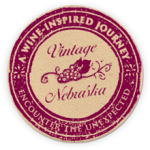 Nebraksa has one of the youngest wine industries in the Midwest, Montgomery said. The first winery in Nebraska opened in 1985 and there are currently 28 wineries in the state.
Nebraksa has one of the youngest wine industries in the Midwest, Montgomery said. The first winery in Nebraska opened in 1985 and there are currently 28 wineries in the state.
Montgomery is relatively new to Nebraska wine too. She became the NWGGA’s first executive director during 2013 after working for WineAmerica, the national trade association of American wineries.
According to a survey done two years ago, there are 300 acres of grapes in Nebraska. A new grape grower survey will be conducted this year and Montgomery predicts the survey will show that the number of acres under cultivation has increased.
Almost all the grapes grown in Nebraska are cold hardy varieties developed by Elmer Swenson or the University of Minnesota. Edelweiss is the most popular local white wine and Frontenac is the most popular red.
The Nebraska Winery and Grape Growers Association will be launching a new marketing campaign during the end of February. Also in the works, is a Nebraska quality wine program that is being developed with the help of Colorado State University.
The growth of the Nebraska wine industry has seen its up and downs. ‘The core group is a little smaller than it was eight years ago, but they’re very committed,” Montgomery said.
This May, Nebraska will hold it’s first statewide wine festival at Mahoney State Park, which is near the population centers in the eastern part of the state. Montgomery said more than half of the state’s wineries are expected to participate.
Another wine event slated for Nebraska is the 2015 VitiNord Conference which is set for Nebraska City during November of 2015. This prestigious global conference for cold climate grape growers and winemakers has most recently been held in Germany and Poland.
‘The Vitinord Conference will help to put Nebraska on the world wine map,” Montgomery said.
Montgomery said a big challenge for Nebraska wine is herbicide drift. Proposed legislation to control 2,4-D herbicides in Nebraska ‘blew up” during 2013, Montgomery said.
Instead of using the law making process, the Winery and Grape Growers Association is now working with a state Senate Agricultural task force on herbicide drift. Montgomery said herbicide drift will continue to be a major focus during 2014.
Homepage photo: The tradeshow floor at the Midwest Grape and Wine Conference in St. Charles, MO; the Midwest’s largest wine trade show.


